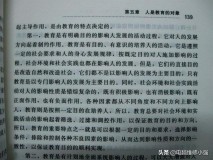
"to" 是一个常用的英语介词,它有多种用法,下面是对其主要用法的总结:
1. **表示方向、目的或位置:**
- 表示运动的方向:I'm going to the store.(我要去商店。)
- 表示目的地:He went to London last week.(他上周去了伦敦。)
- 表示位置:The book is on the table.(书在桌子上。)
2. **表示时间:**
- 表示未来的时间:I have a meeting at 3 o'clock.(我3点有个会议。)
- 表示截止时间:The assignment is due tomorrow.(作业明天截止。)
3. **表示间接对象:**
- 表示行动的接受者或受益者:She gave a gift to her friend.(她送了礼物给她的朋友。)
4. **表示比较:**
- 表示比较对象:This is similar to that.(这个和那个相似。)
5. **用于不定式符号 "to + 动词":**
- 表示动作的目的或用途:I want to learn how to play the guitar.(我想学弹吉他。)
6. **用于某些动词后构成习惯用法:**
- 常见的动词短语:look forward to, get used to, be accustomed to, be used to, listen to, pay attention to, be attracted to, etc.
7. **表示比例、比率或关系:**
- 表示比例或比率:Five dollars to a pound.(5美元兑1英镑。)
- 表示关系:This key belongs to the door.(这把钥匙是这扇门的。)
8. **用于某些形容词后构成习惯用法:**
- 常见的形容词短语:similar to, opposite to, equal to, etc.
请注意,"to" 在不同语境下可能有不同的含义,因此要根据具体的句子和语境来理解其意义。
介词是连接词与词之间关系的词类,常用于表示时间、地点、方式、原因等。常见的介词有in、on、at、by、with、for、to等。
in表示在某个范围内,on表示在某个表面或日期,at表示在某个具体位置或时间,by表示通过某种方式或交通工具,with表示伴随或使用某物,for表示目的或持续时间,to表示方向或目的地。此外,介词还有一些固定搭配,如in front of、on top of、at the end of等。正确使用介词可以使语言更加准确、流畅。













